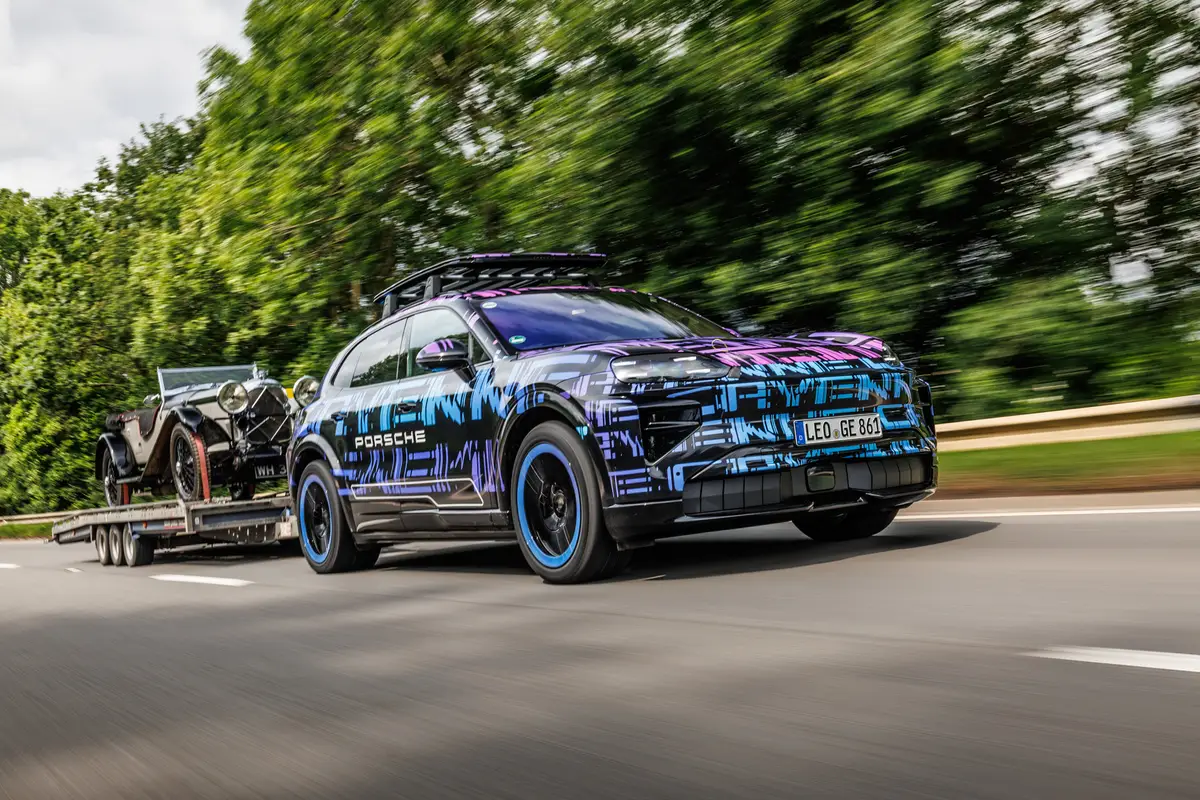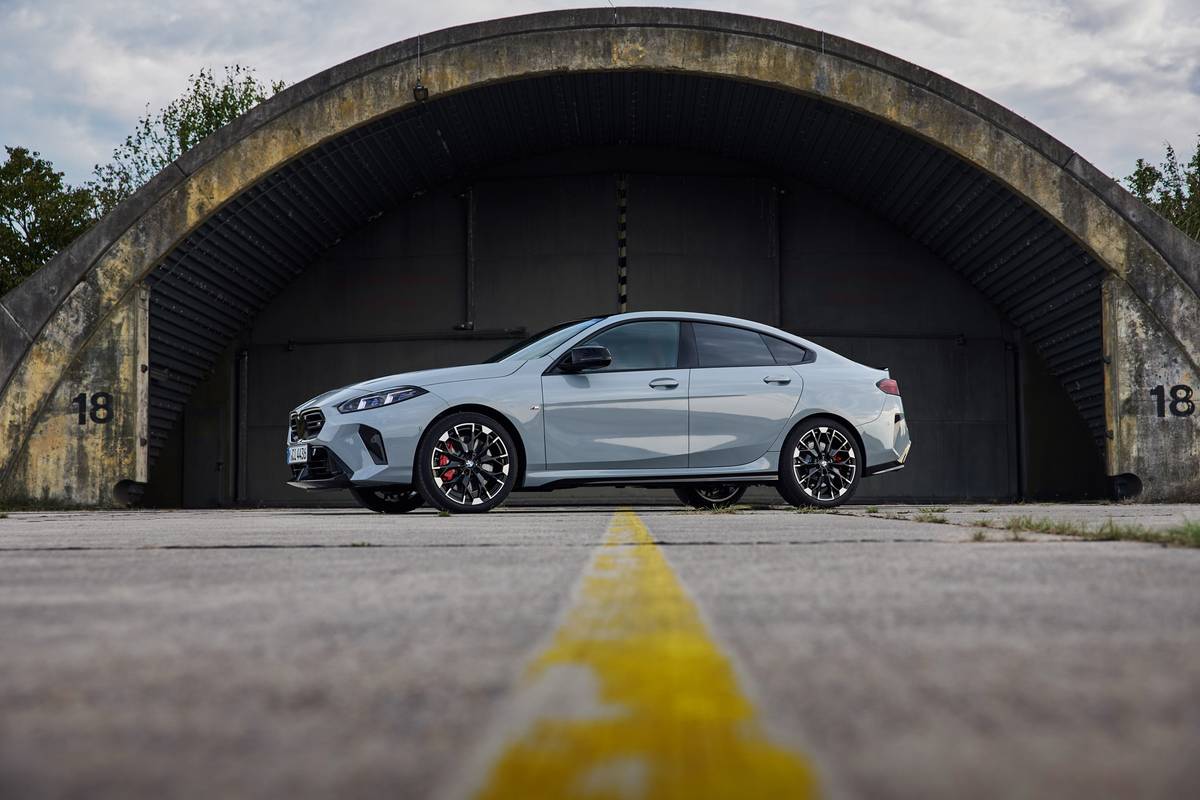chicagotribune.com's view
The Chrysler Cirrus looks as if it should carry a $30,000 price tag, yet it acts as if its $17,000 to $19,000 sticker is sufficient.
In putting the car through its paces here at a preview of Chrysler’s newest four-door sedan for the 1995 model year, the obvious strength is styling, a clean, crisp look complemented by an eye-grabbing thin-vertical-bar chrome grille on the base LX model, and a body-colored version on the upscale LXi. The grille makes the car look like a mini Lincoln Mark VIII.
Sit back and admire.
Then get inside and, after traveling a few miles, you find wine country becomes whine country.
We tested early Cirrus prototypes in Detroit (Cartalk, June 5), cars that were still undergoing engine, transmission, interior and exterior refinement. Now Chrysler has put most of the finishing touches on the car for media scrutiny before an October launch.
Cirrus is one of a trio of sedans coming from Chrysler. Its partners will be the Dodge Stratus, arriving in January, and an unnamed Plymouth version coming out in the fall of ’95 for ’96. Cirrus/Stratus/No Name will fill the void left by the departure of the Dodge Spirit and Plymouth Acclaim, sedans that performed well but looked as if they were designed by the American Association of Retired Persons.
Cirrus will be offered in a base LX model and an upscale LXi that comes with a few more creature comforts as well as a more roadworthy suspension and roadholding tires.
Both have a 2.5-liter, 164-horsepower, 24-valve, V-6 engine, driver- and passenger-side air bags and anti-lock brakes. If you smoke, an ashtray is a $5 option in either. If you don’t smoke, the vacant space becomes a cupholder. If you think Chrysler’s $5 option is a publicity stunt, consider that the Cirrus preview was held at a wine-country resort where the penalty for lighting up was $125 added to the bill for your room, which, oddly enough, contained a wood-burning fireplace.
But we digress.
What neither model has is traction control, which roughly would require the addition of a $50 chip to the ABS computer, but an expense Chrysler chose to delay for a year though the rival Ford Contour and Mercury Mystique (Cartalk, June 12) will offer it this fall.
Cirrus also lacks a power sunroof, an expense that will be delayed for two years, and a home-grown V-6 engine. The Mitsubishi 2.5 is its one and only V-6 in the sedan. A Chrysler-built, 2.7-liter, V-6 is coming, but not until it bows in the larger LH sedans (Chrysler Concorde/Dodge Intrepid/Eagle Vision) in two years.
The 2.5, V-6 has sufficient muscle on straight, flat surfaces, but on the steep winding hills the engine needs to take a deep breath. And the 4-speed spends a lot of time searching for the right gear on steep inclines.
The LX comes with 15-inch Michelin “ride” tires, the LXi with 15-inch Michelin “touring” tires and a sports suspension. The ride tires are rather loud, and you feel just about every crack and crevice in the road. The suspension isn’t all that quiet, either, as you seem to hear every movement in the shocks on irregular surfaces.
The LXi touring tires were quieter and embraced the pavement with surer footing. The touring tires are teamed with a sports suspension with higher shock and spring rates for noticeably less body lean and sway. The LXi sits flatter in corners and turns, and you can maintain control as you approach and exit those turns at far greater speed than in the LX. Speed-proportional power steering, which means more assist in parking lot maneuvers, less when cruising the interstate, makes the LXi fairly nimble.
Chrysler set up a special challenge at a nearby vacant airfield. A series of plastic pylons provided a serpentine course dotted with twisting loops and evasive right/left turns. The LX felt more inclined to ride on i s sidewalls; the LXi sat up straight through the obstacles.
Chrysler has come up with a roomy, spacious interior with incredible rear-seat passenger room equal to, if not greater than, most full-size cars.
The biggest gripe with LX or LXi is excessive windshield glare. The glass is sharply raked, keeping with the aero theme copied from the LH sedans. The slant magnifies reflection off the glass and the dash. Chrysler reportedly has engineers developing a non-reflective dash coating.
Mechanics may have a gripe with the Cirrus engine compartment: There’s hardly room for lint, much less a battery, so Chrysler moved the latter behind and under the left-front fender.
One nifty feature went somewhat awry. There’s a rear seat-back release to let you to pop down the seat from the trunk while loading groceries or luggage without having to pull a release lever or push a button from inside the car. With Cirrus you just pull a nylon strap in the trunk to release the seat back.
But while the seat back unlocks, it doesn’t automatically recline. You have to, as Chrysler officials advised, “give the back a little nudge and it will fall.” Nudge? We tried two seat backs in two cars and what Chrysler officials call a nudge the Chicago Police Department would call assault and battery.
And while the trouble-shooters are working on that, they should fix the springs holding open the trunk lid. That lid opens wide, at about a 95-degree angle, so it almost leans up against the rear window. However, if you open the lid say, only 89 or 90 degrees, it tends to live up to that law of physics that says a trunk lid in motion will tend to stay in motion and fall and tattoo your head. We tried the lid twice on two cars, and the result was the same each time-clunk, ouch and a big “gosh darn!” or something to that effect. Chrysler promised a revision before October.
Though Cirrus could use some refinement, credit the engineers and designers for nifty work. The standard dual air bags and ABS will attract the safety-conscious, as will the optional rear child-safety seat that remains hidden until you pull it out for use.
Other notable features include a cupholder in the rear of the center console that holds round cups and rectangular juice boxes; large outside heated mirrors and, in general, massive glass area for excellent visibility (and the need for air conditioning); self-healing paint akin to that on the LH sedans that blends together to “erase” minor scratches after exposed to sunlight for 24 to 48 hours; wide-opening front and rear doors and a sufficiently long wheelbase so the rear door doesn’t open over a wheelwell that eats into entry space; height-adjustable shoulder belts; wide comfortable seats with good side support; standard platinum-tipped spark plugs that don’t need changing for 100,000 miles.
Also, large windshield wipers with a specially designed spoiler lip prevent water from splashing or crawling up the windshield in droplets; yellow labels on all engine compartment fluid containers make for easy identification; a positive battery plug, clearly marked in red, and a negative battery ground plug, marked in yellow, to jump start the battery are hidden in the fender; and ducts run under the front seats to heat/cool rear-seat occupants.
The LX starts at $17,435, the LXi at $19,365. Add $535 for freight. Standard equipment includes air conditioning, digital clock, rear-window defroster, child-safety locks, fog lights, solar-controlled windshield and tinted side glass, carpeting, floor mats, adjustable steering wheel, remote keyless entry, electric power outlet (razor or radar detector), AM/FM stereo radio (with cassette and power antenna in LXi), leather power seats (LXi), power windows, power steering and speed control.
Chrysler boasts Cirrus should be far less expen ive than its Japanese rivals-or about $3,000 less than a Toyota Camry LE, $1,500 less than a Honda Accord LX and $700 less than an Nissan Altima GXE, all with 4-cylinder engines.
Latest news



